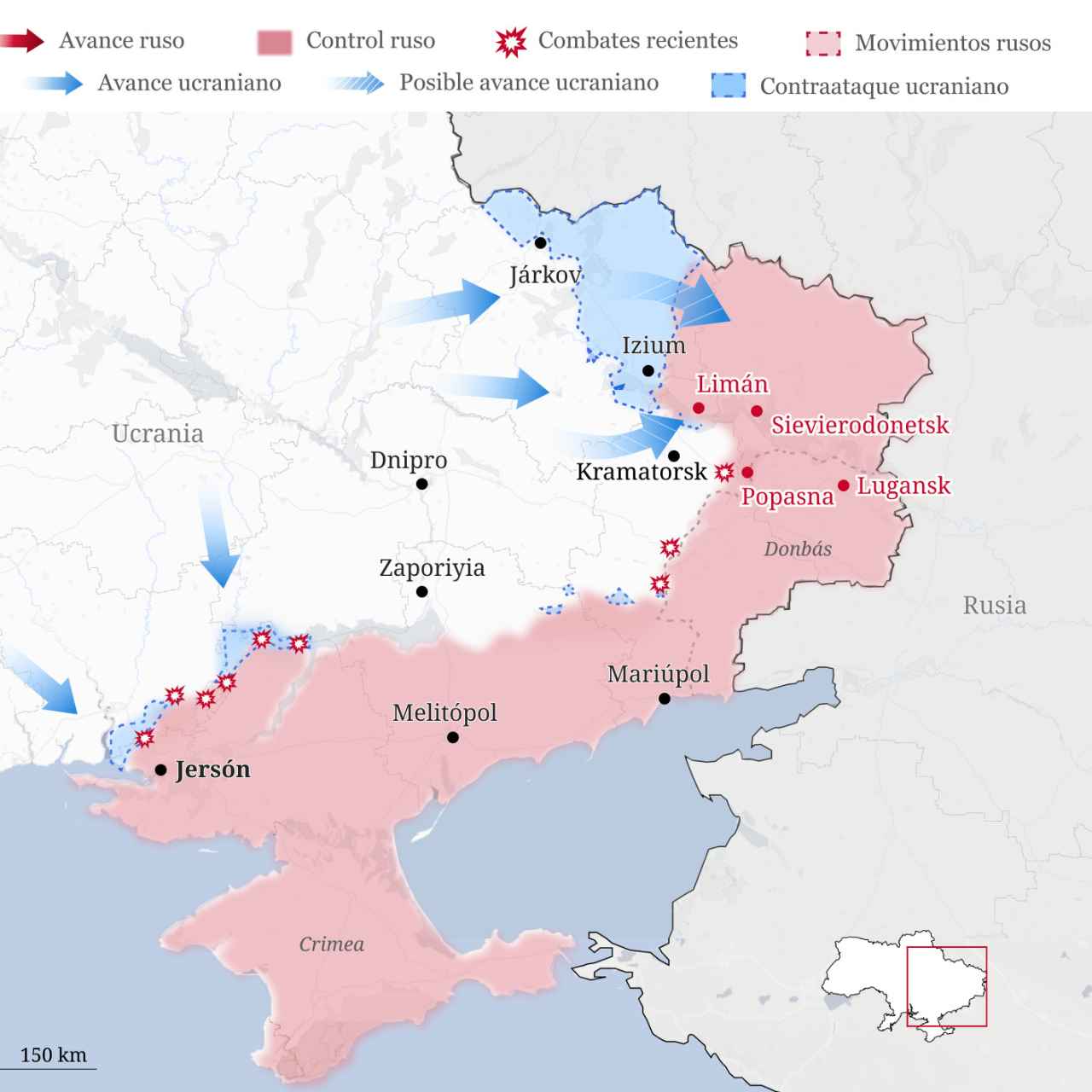‘Operation Fortitude’. That was the name that the allies gave to the intelligence work consisting of making the Nazis believe that there was going to be a landing in Calais and thus inviting them to deploy all their forces in the strait. In this way, they left Normandy unprotected, and although landing on its beaches was much more dangerous and left the troops much more exposed, the advantage was evident: practically no one expected them. Once the landing was completed, the American troops were able to advance without problem through French territory, liberating as many people as they could get in their way while the Germans moved units from one side to the other, disconcerted.
At that time, someone may have wondered ‘Where is the German army?’ seeing the absence of troops that could stop the advance. Eighty years later, in Ukraine, we can repeat the question: ‘Where is the Russian army? What has become of the second largest military force in the world?’ The Ukrainian ‘Operation Fortitude’ has not required great secrecy. All lures have been more than public. It is not a story of spies, but of headlines in the press around the world: the counteroffensive of Kherson. The famous Kherson counteroffensive that did not arrive at all, but that served for Putin to take the bait and divert his scarce forces to the southern front.
What we have, therefore, is a new Normandy under the name of Kharkiv. In less than a week, Ukraine has reclaimed much of the ground that took Russia months to occupy. Not only that, but there is no news of the invaders. Once the dam is breached, there is no way to stop the runaway water. The few remaining Russian soldiers surrender or flee. The militiamen resist as best they can while, of the mercenaries of the Wagner Group, who gained so much fame in minor conflicts, nothing is known. The equipment is on the ground waiting for the enemy to pick it up.
[El líder checheno Kadyrov, de aliado de Putin a crítico: “Hay que explicarle lo que está pasando”]
If on Sunday we were talking about the entry of the Ukrainian troops into Izium practically without firing a shot, this Monday a new crossing of the Siverski Donets river through the city of Bilohorivka has been confirmed. To this must be added the taking of Sviatohirsk and the news of clashes in the vicinity of Limán. There are those who claim that the advance could have even reached the town of Kreminna, precisely where the Russian soldiers had escaped last week, but not only is this not confirmed, but it seems very unrealistic.
The borders of 2014, in danger
We live in a historical moment full of uncertainty. Ukraine has re-entered the Luhansk region, which seemed lost forever after the loss of Sievierodonetsk and Lisichansk last July. If the capture of Limán is confirmed, the road to Kraminna would already be open (barely 35 kilometers). There, the troops from the west could join those who have just settled in Bilohorivka and continue advancing. We are no longer talking about Kharkov, we are talking about the Donetsk region itself, that is, about part of that Donbas that has become the only realistic target of Putin’s army after trying to occupy even kyiv in the first week of war.
Update to September 11. Source: ISW, Ministry of Defense of the United Kingdom, own elaboration
The issue here is where the Russian troops are waiting. From the Kremlin, seen what has been seen, they insist on the version of the “strategic withdrawal”, but where is Russia withdrawing? If the Ukrainian control of Izium and Liman is confirmed, the fall of Sievierodonetsk and Lisichansk seems a matter of time. In fact, from there Zelensky’s generals might think of going further south and to pocket the troops that have been trying without success for four months to take Bakhmut/Artemivsk. That, without ruling out a possible attack on Lugansk, the capital of the separatist region since the 2014 insurrection.
To get an idea, from Kreminna to Lugansk there are just over a hundred kilometers and direct communication from Lisichansk by highway. This is roughly the same distance as Kramatorsk from Donetsk. Russia has to make many decisions right now with very few men, much less than the experts calculated. If there are moves to the north, to stop the advance from Limán/Kreminna, there is a risk of neglecting the west flank, leaving the eastern bank of the Donets to its fate. Even closing both hemorrhages, we still don’t know if Ukraine has troops and weapons to try to take advantage of the situation and launch a new offensive south from Sloviansk, putting the two capitals in serious trouble.
[Rusia detiene el último reactor de Zaporiyia y alerta del riesgo de un accidente nuclear]
“Witch hunt” and confusing messages from Moscow
If nothing changes, at this rate of progress, Ukraine may break 2014 borders soon. We all understand that Russia will fight to prevent it, but we don’t know how or when. The news coming from Moscow is tremendously confusing: images of armored vehicles leaving the city for Bolgorod were published on Friday. Those units should have arrived on the same Saturday, weren’t they ready to go into combat or are they being saved for a better time? Although Zelensky has insisted – at the request of the United States – that in no case will there be an attack on Russian soil, the truth is that his troops are already in Strilecha, that is, on the very border.
While some politicians call for immediate general mobilization to save the furniture in Ukraine, others insist that it is not necessary. Some speak of a long war, others prefer to remain silent. In recent days, even the state press -if there is another- has been insinuating that someone has not done their job well and that responsibilities should be taken. Whether these will reach Putin or not is something that we will have to see and that will depend on the magnitude of the disaster.
[84 concejales de los distritos de Moscú y San Petersburgo piden la dimisión de Putin]
The curious thing about all this Ukrainian Fortitude is that the Russians are defending Kherson tooth and nail. Progress in the south is minimal since early summer. If the target is Donbas, as is so often insisted, what are the Russian battalions doing defending Kherson, Melitopol or Mariupol, even thinking of annexation referendums when the front that really matters collapses? Are they on their way east, or has communication been broken by breaching bridges and supply lines under HIMARS missiles?
Perhaps what would make the most sense would be to withdraw into Crimea, secure that border, send some of those troops to defend Luhansk and southern Donetsk, and hope that this is enough to maintain the status quo of 2014. Any other option seems too risky right now. For that, a unity of decision and action is required, which is proving to be non-existent. No one knows at the moment how many men are on the ground or how they are distributed. Meanwhile, Ukraine continues to receive weapons, money and has its lines of communication intact. The future looks bright and hopeful for them.















Add Comment